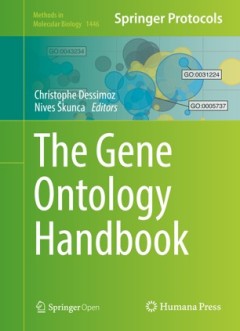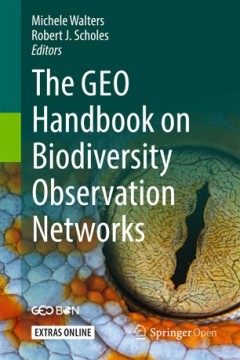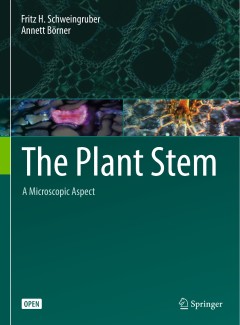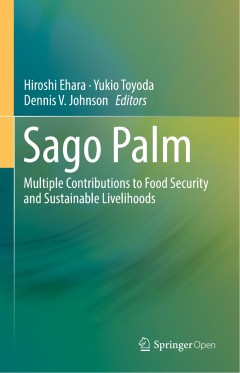Filter by

The gene ontology handbook
This book provides a practical and self-contained overview of the Gene Ontology (GO), the leading project to organize biological knowledge on genes and their products across genomic resources. Written for biologists and bioinformaticians, it covers the state-of-the-art of how GO annotations are made, how they are evaluated, and what sort of analyses can and cannot be done with the GO. In the sp…
- Edition
- -
- ISBN/ISSN
- 9781493937431
- Collation
- xii, 305p. : ill.
- Series Title
- -
- Call Number
- 572.80285 GEN g

The GEO handbook on biodiversity observation networks
Biodiversity observation systems are almost everywhere inadequate to meet local, national and international (treaty) obligations. As a result of alarmingly rapid declines in biodiversity in the modern era, there is a strong, worldwide desire to upgrade our monitoring systems, but little clarity on what is actually needed and how it can be assembled from the elements which are already present. T…
- Edition
- -
- ISBN/ISSN
- 9783319272887
- Collation
- xii, 326p. : ill.
- Series Title
- -
- Call Number
- 577 GEO g

The plant stem : a microscopic aspect
This unique and attractive open access textbook combines the beauty of macroscopic pictures of plant stems with the corresponding colorfully stained images of anatomical micro-structures. In contrast to most botanical textbooks, it presents all the stem characteristics as photographs and shows the microscopic reality. The amount of text is reduced to a minimum, and the scientific information i…
- Edition
- -
- ISBN/ISSN
- 9783319735245
- Collation
- vii, 207p. : ill.
- Series Title
- -
- Call Number
- 581.495 SCH p

Pre-field screening protocols for heat-tolerant mutants in rice
This open access book presents simple, robust pre-field screening protocols that allow plant breeders to screen for enhanced tolerance to heat stress in rice. Two critical heat-sensitive stages in the lifecycle of the rice crop are targeted – the seedling and flowering stages – with screening based on simple phenotypic responses. The protocols are based on the use of a hydroponics system an…
- Edition
- -
- ISBN/ISSN
- 9783319773384
- Collation
- xii, 39p. : ill.
- Series Title
- -
- Call Number
- 633.182 PRE p

Sago palm : multiple contributions to food security and sustainable livelihoods
This book addresses a wide variety of events and technologies concerning the sago palm, ranging from its botanical characteristics, culture and use to social conditions in the places where it is grown, in order to provide a record of research findings and to benefit society. It discusses various subjects, including the sago palm and related species; differentiation of species of starch-producin…
- Edition
- -
- ISBN/ISSN
- 9789811052699
- Collation
- xiii, 330p. : ill.
- Series Title
- -
- Call Number
- 634.974 SAG s

Bioeconomy : shaping the transition to a sustainable, biobased economy
This book defines the new field of "Bioeconomy" as the sustainable and innovative use of biomass and biological knowledge to provide food, feed, industrial products, bioenergy and ecological services. The chapters highlight the importance of bioeconomy-related concepts in public, scientific, and political discourse. Using an interdisciplinary approach, the authors outline the dimensions of the …
- Edition
- -
- ISBN/ISSN
- 9783319681528
- Collation
- vi, 356p. : ill.
- Series Title
- -
- Call Number
- 338.927 BIO b
 Computer Science, Information & General Works
Computer Science, Information & General Works  Philosophy & Psychology
Philosophy & Psychology  Religion
Religion  Social Sciences
Social Sciences  Language
Language  Pure Science
Pure Science  Applied Sciences
Applied Sciences  Art & Recreation
Art & Recreation  Literature
Literature  History & Geography
History & Geography